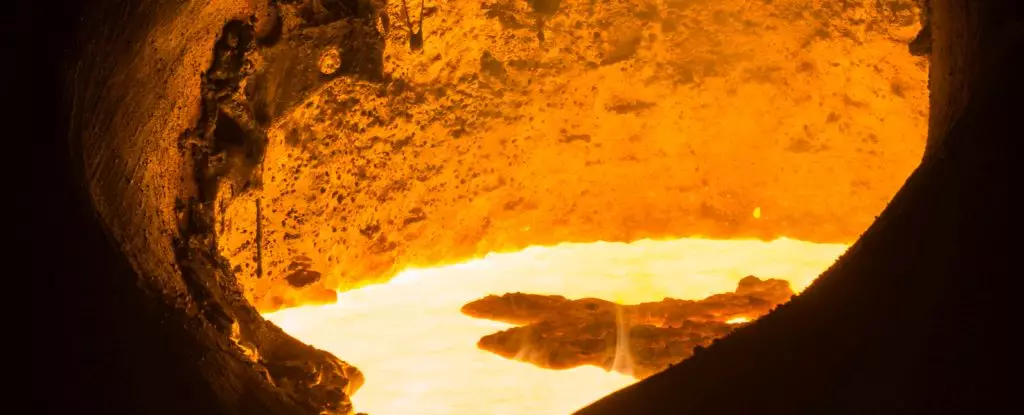Gold has an almost mythical quality, its luster drawing humanity toward it for millennia. Covering the world in gleaming splendor, this precious metal has been the cornerstone of wealth, aspiration, and conflict alike. However, the recently unveiled secrets of Earth’s core unveil gold in a manner that’s not only tantalizing but also profoundly enlightening. A groundbreaking study led by researchers, including geochemist Nils Messling of Göttingen University, unveils the astonishing fact that the Earth’s core—a largely inaccessible region—might be leaking precious metals like gold into the mantle and, eventually, into our own crust.
The idea of our planet hoarding over 99 percent of its gold—sufficient to create a 20-inch thick blanket over all land—is not only astounding but serves as a poignant metaphor for the extremes of wealth redistribution and inequality we experience today. While the world clamors for the gold that is ostensibly “within reach,” the reality reflects a vast, untapped reservoir lying below our feet. It mirrors the struggle many face in seeking opportunities and riches that appear glimmering and close, yet remain obscured by layers of privilege and circumstance.
Scientific Breakthroughs and the Hunt for Isotopes
The elegant ramifications of geochemical research enable us to transcend the surface narrative of resource acquisition. With newfound analysis techniques, the study reveals that the volatile relationship between Earth’s core and its surface is far more interconnected than previously understood. The team employed isotopic analyses of ruthenium, a heavy metal, to delineate the differences between surface materials and those originating from the core. Remarkably, they discerned an unusual abundance of ruthenium-100, suggesting that precious metals like gold are indeed seeping from deep below.
But what’s so galvanizing about this discovery extends beyond the scientific community. This newfound knowledge urges us to reevaluate how we view not only our planet but also our economic systems. Just as the Earth has hidden wealth, the infrastructure of power and economic privilege often buries potential wealth and opportunities for those who live above and below the surface. We live in a world where resources exist in abundance, even if their accessibility remains grossly uneven.
Nature’s Long Game: Lessons for Humanity
In the context of such revelations, humanity must undertake a long, introspective journey. Understanding how Earth’s materials traverse from the depths of their core to the surface might hold essential lessons for our human systems. Wealth distribution should not be a convoluted game of chance, favoring the fortunate few while neglecting entire demographics. The slow and steady process by which gold and other metals permeate through the mantle can serve as an allegory for the gradual, yet vital changes needed in socio-economic structures.
The study highlights that accessing these hidden riches demands a commitment to investigative spirit and a willingness to innovate—to dig deeper, not only in terms of geological exploration but also in challenging existing paradigms of resource allocation and economic equity. The geological and economic landscapes may be distant from one another, but the principles governing both echo similar legacies of conquest, colonization, and the unearthing of potential.
A Glimpse into the Future of Planetary Science and Society
This study serves a dual purpose: it expands our understanding of Earth’s geology while simultaneously echoing critical socio-economic themes. The insights drawn from the core send rippling effects into the cultural conversation surrounding wealth—who creates it, who benefits from it, and how it is harnessed—or squandered.
When we recognize that resources are part of a larger, complex ecosystem, it might foster a shift towards sustainability and responsibility. The scientific journey into our planet’s hidden treasures perhaps encourages us to pursue a more equitable distribution of our collective resources. The Earth’s revelations about gold are more than just scientific curiosities; they are profound reflections of our societal structures. We must champion a worldview that seeks to transform how we engage with our environment and with each other.


Leave a Reply